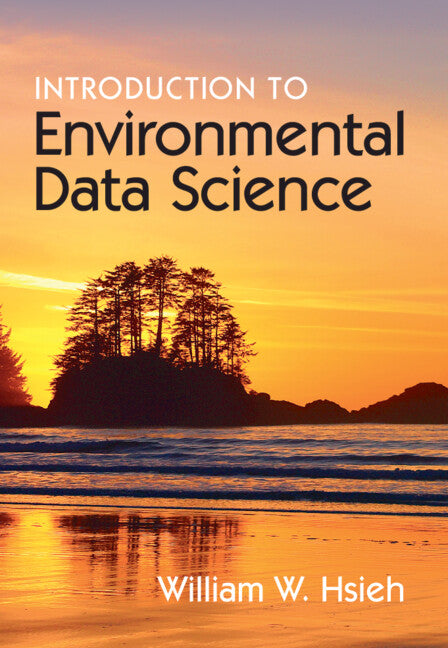Freshly Printed - allow 4 days lead
Couldn't load pickup availability
Introduction to Environmental Data Science
A comprehensive guide to machine learning and statistics for students and researchers of environmental data science.
William W. Hsieh (Author)
9781107065550, Cambridge University Press
Hardback, published 23 March 2023
500 pages
25 x 17.5 x 3.5 cm, 1.33 kg
'There is a need for a forward-looking text on environmental data science and William Hsieh's text succeeds in filling the gap. This comprehensive text covers basic to advanced material ranging from timeless statistical techniques to some of the latest machine learning approaches. His refreshingly engaging style is written to be understood and complemented by a plethora of expressive visuals. Hsieh's treatment of nonlinearity is cutting-edge and the final chapter examines ways to combine machine learning with physics. This text is destined to become a modern classic.' Sue Ellen Haupt, National Center for Atmospheric Research
Statistical and machine learning methods have many applications in the environmental sciences, including prediction and data analysis in meteorology, hydrology and oceanography; pattern recognition for satellite images from remote sensing; management of agriculture and forests; assessment of climate change; and much more. With rapid advances in machine learning in the last decade, this book provides an urgently needed, comprehensive guide to machine learning and statistics for students and researchers interested in environmental data science. It includes intuitive explanations covering the relevant background mathematics, with examples drawn from the environmental sciences. A broad range of topics is covered, including correlation, regression, classification, clustering, neural networks, random forests, boosting, kernel methods, evolutionary algorithms and deep learning, as well as the recent merging of machine learning and physics. End?of?chapter exercises allow readers to develop their problem-solving skills, and online datasets allow readers to practise analysis of real data.
1. Introduction
2. Basics
3. Probability distributions
4. Statistical inference
5. Linear regression
6. Neural networks
7. Nonlinear optimization
8. Learning and generalization
9. Principal components and canonical correlation
10. Unsupervised learning
11. Time series
12. Classification
13. Kernel methods
14. Decision trees, random forests and boosting
15. Deep learning
16. Forecast verification and post-processing
17. Merging of machine learning and physics
Appendices
References
Index.
Subject Areas: Pattern recognition [UYQP], Machine learning [UYQM], Data mining [UNF], Mathematical & statistical software [UFM], Environmental monitoring [TQD], The environment [RN], Geographical information systems [GIS & remote sensing RGW], Meteorology & climatology [RBP], Data analysis: general [GPH]


